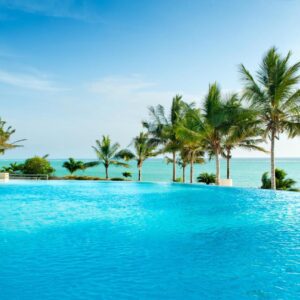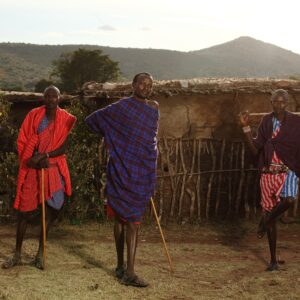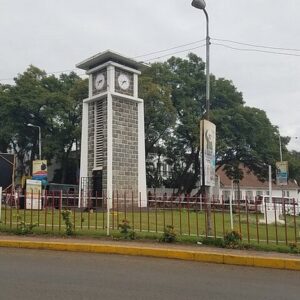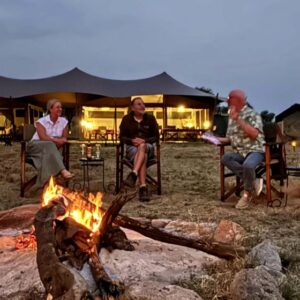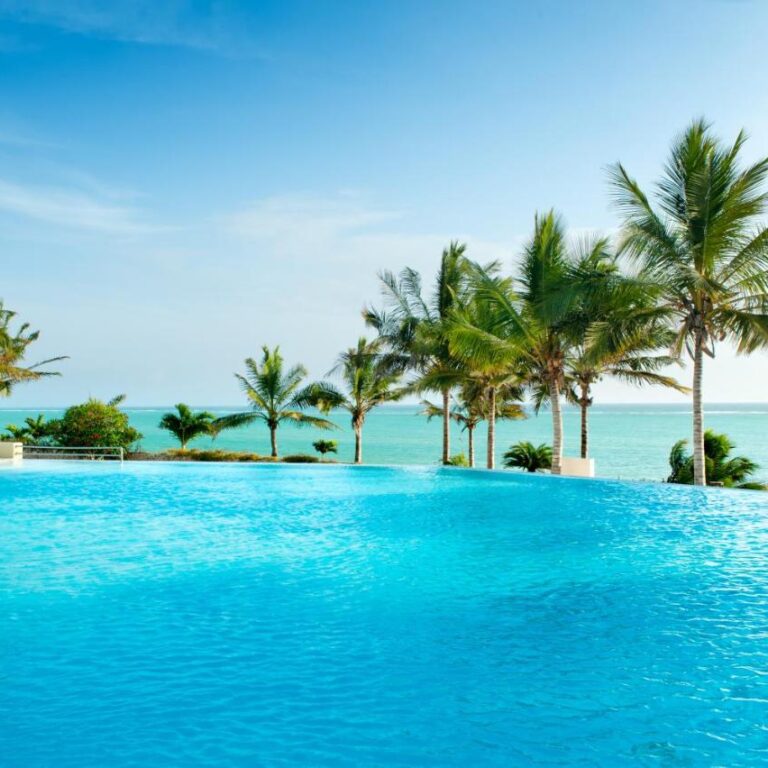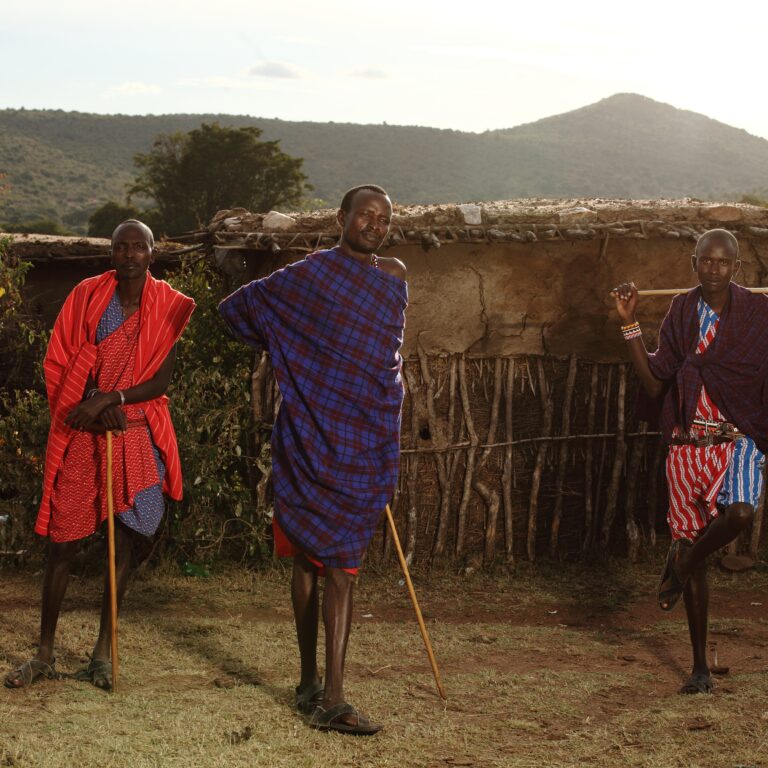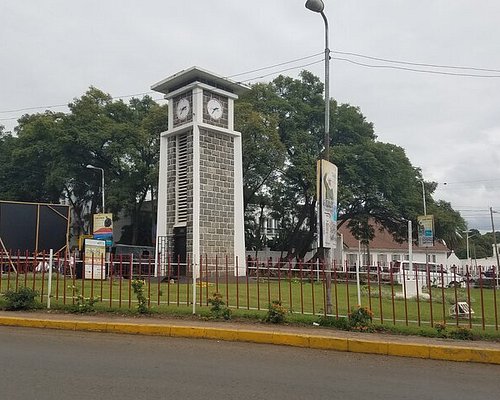Explore Ngorongoro in July – Weather, Prices, Travel Tips, Safari & More
Ngorongoro Crater, often referred to as the “Eighth Wonder of the World,” is a must-visit destination in Tanzania. In July, the crater offers some of the best wildlife viewing opportunities as it is the height of the dry season. This comprehensive guide will walk you through everything you need to know about visiting Ngorongoro in July, from weather conditions to top activities, packing tips, and more.
1. Weather and Climate Ngorongoro craer in July
July in Ngorongoro marks the middle of the dry season, bringing cool and clear weather. Daytime temperatures typically range from 18°C to 22°C (64°F to 72°F), making it pleasantly warm for game drives. However, the mornings and evenings can be quite chilly, with temperatures dropping to as low as 5°C to 10°C (41°F to 50°F) on the crater rim. Due to the higher altitude, the crater rim can feel colder than the crater floor.
Rain is rare in July, and the skies are mostly clear, providing perfect conditions for photography. The dry weather also means that the vegetation is thinner, making it easier to spot wildlife.
2. Why Visit Ngorongoro Crater in July
July is one of the best times to visit Ngorongoro due to the excellent weather and abundant wildlife. The dry conditions force animals to congregate around the few remaining water sources, making it easier to see a variety of species, including the Big Five. The cooler temperatures are ideal for exploring the crater, and the lack of rain ensures that your safari won’t be interrupted by sudden downpours.
Another reason to visit in July is the Great Migration, which typically passes through the nearby Serengeti during this time. While the migration itself doesn’t occur in Ngorongoro, many visitors combine a trip to both locations for an unparalleled wildlife experience.
3. Where to Go in Ngorongoro in July
Ngorongoro offers several key spots to explore during your visit in July:
The Crater Floor: This is the main attraction, where you’ll find an incredible concentration of wildlife, including lions, elephants, rhinos, and more. The open plains of the crater floor make it easy to spot animals from a distance.
Lerai Forest: Located on the crater floor, this lush forest is a prime spot for seeing elephants and leopards. The forest’s greenery contrasts beautifully with the surrounding dry plains.
Olduvai Gorge: Located just outside the Ngorongoro Conservation Area, Olduvai Gorge is a significant archaeological site where some of the earliest human remains have been found. It’s an excellent stop for those interested in history and anthropology.
4. When to Visit Ngorongoro in July
July is an ideal time to visit Ngorongoro. The weather is stable, with little to no rainfall, and the wildlife is abundant. Since July is part of the peak tourist season, it’s advisable to arrive at the crater early in the morning to avoid the crowds and have the best chance of seeing active predators like lions and hyenas.
Plan your visit for the early hours when animals are most active, and the lighting is perfect for photography. The crater opens to visitors at 6 AM, and starting your day early ensures a more peaceful and rewarding experience.
5. What to Do in Ngorongoro in July
Ngorongoro offers a range of activities to enjoy during July:
Game Drives: The most popular activity, game drives allow you to explore the crater and observe the rich wildlife. A full-day game drive gives you ample time to cover the entire crater floor and visit different habitats.
Walking Safaris: For those looking to get closer to nature, walking safaris around the crater rim or in areas like Olmoti and Empakaai craters are a great option. These guided walks offer a more intimate experience with the environment and the opportunity to learn about the local flora and fauna.
Cultural Tours: The Ngorongoro Conservation Area is home to the Maasai people. A visit to a Maasai village provides insight into their traditional lifestyle, customs, and the challenges they face in preserving their culture.
Birdwatching: July is an excellent time for birdwatching, with numerous species active around the crater lakes and forests. Flamingos, ostriches, and raptors are commonly seen.
6. What to Pack for Ngorongoro in July
Packing the right items will ensure a comfortable and enjoyable visit to Ngorongoro in July. Here’s what you should bring:
Warm Layers: Mornings and evenings can be very cold, especially on the crater rim, so pack warm clothing such as a fleece, jacket, and thermal layers. A scarf, gloves, and a beanie are also recommended.
Lightweight Clothing: During the day, the weather is mild, so lightweight, breathable clothing is ideal. Neutral colors are best to blend in with the surroundings and avoid attracting insects.
Comfortable Footwear: Whether you’re on a game drive or walking safari, comfortable, sturdy shoes are essential.
Sun Protection: Even in July, the sun can be strong, so bring sunscreen, sunglasses, and a wide-brimmed hat.
Binoculars and Camera: Don’t forget your camera and binoculars to capture the incredible wildlife and landscapes.
7. Crowds & Costs – Ngorongoro in July
July is part of the peak tourist season, which means that Ngorongoro can be quite busy, especially at popular times like early morning. However, the crater’s large size helps disperse the crowds, so it’s still possible to find quieter spots.
Due to the high demand, prices for accommodation and tours are at their peak in July. It’s advisable to book your lodging and safari tours well in advance to secure the best options and rates. While costs are higher, the exceptional wildlife viewing and favorable weather make it worth the expense.
8. Wildlife & Animals – Ngorongoro in July
Wildlife viewing in Ngorongoro is exceptional in July. The dry season concentrates animals around the remaining water sources, making it easier to spot a variety of species:
Lions: The crater is known for its high density of lions. They are often seen lounging on the crater floor, especially near the Lerai Forest.
Elephants: You’ll mostly encounter older bulls on the crater floor, while herds are more commonly found in the surrounding highlands.
Rhinoceros: Ngorongoro is one of the few places in Tanzania where you can see the critically endangered black rhinoceros. They are usually spotted in the open plains.
Hippos: The hippo pool on the crater floor is a popular spot to observe these massive creatures up close.
Birds: Birdlife is abundant in July, with species like flamingos, ostriches, and various raptors adding to the safari experience.
9. Tours and Activities – Ngorongoro in July
July offers a variety of tours and activities:
Game Drives: A full-day game drive is the best way to explore the crater and see its diverse wildlife. Most tours start early in the morning and include a packed lunch to maximize your time in the park.
Hot Air Balloon Safaris: For a unique perspective, consider a hot air balloon safari. While more expensive, it provides stunning aerial views of the crater and surrounding areas.
Maasai Village Visits: Learn about the Maasai culture through visits to local villages. These tours often include traditional dances, craft demonstrations, and opportunities to interact with the Maasai people.
Guided Walks: Explore the crater rim or other areas on foot with a knowledgeable guide. This is a great way to appreciate the smaller details of the environment and spot birds and other wildlife.
10. What to Expect – Ngorongoro in July
In July, you can expect clear skies, cool temperatures, and some of the best wildlife viewing of the year. The dry season brings animals to the remaining water sources, making it easier to see a variety of species in one area. The atmosphere is lively but not overcrowded, as the crater’s size allows visitors to spread out and enjoy the sights at their own pace.
11. Ngorongoro Accommodations in July
Accommodation options in Ngorongoro range from luxury lodges to budget-friendly campsites:
Luxury Lodges: Located on the crater rim, these lodges offer stunning views, top-notch amenities, and the convenience of being close to the crater floor. Expect higher prices during this peak season.
Mid-Range Lodges: These are slightly further from the crater but offer a good balance of comfort and affordability.
Campsites: For those on a budget, campsites provide a more rustic experience, often with shared facilities. They are a great option for adventurous travelers who want to stay close to nature.
12. Getting to Ngorongoro Crater in July
Ngorongoro Crater is accessible from Arusha, the main gateway to Tanzania’s northern safari circuit. Most visitors fly into Kilimanjaro International Airport (JRO) or Arusha Airport (ARK) and then take a road transfer to the crater. The drive from Arusha to Ngorongoro takes about 3-4 hours.
In July, the roads are in good condition, but it’s still advisable to use a 4×4 vehicle, especially if you plan to explore areas beyond the crater floor. Many tour operators offer private transfers and guided tours, making it easy to reach the crater and enjoy a hassle-free experience.
Conclusion: Bes Safari in Ngorongoro crater in July
Visiting Ngorongoro in July offers a unique opportunity to experience one of Africa’s most iconic wildlife destinations at its best. With perfect weather, abundant wildlife, and a range of activities to choose from, it’s an ideal time to explore the wonders of the Ngorongoro Crater. Whether you’re on a luxury safari or a budget adventure, July in Ngorongoro promises an unforgettable experience.

